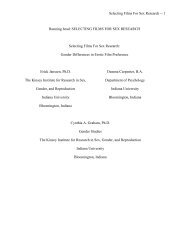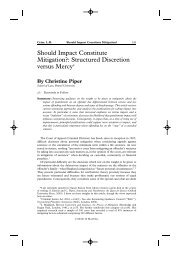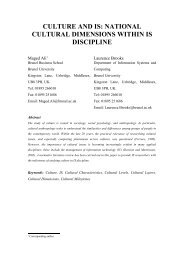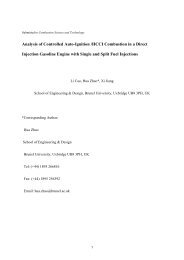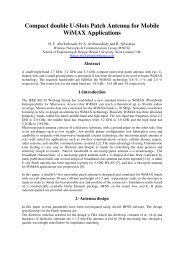Ecofeminism in the 21st Century
Ecofeminism in the 21st Century
Ecofeminism in the 21st Century
You also want an ePaper? Increase the reach of your titles
YUMPU automatically turns print PDFs into web optimized ePapers that Google loves.
Mellor, 1992, Merchant, 1996, Plumwood, 1993) rests on chang<strong>in</strong>g our priorities<br />
whereby we may be driven more by quality of life issues, and that it is redistribution<br />
that should be at <strong>the</strong> heart of policy, ra<strong>the</strong>r than generat<strong>in</strong>g more growth. Eco-<br />
fem<strong>in</strong>ist literature suggests that women might be better able than men to effect this<br />
change, and that, <strong>the</strong>refore, it is not just a matter of equality with<strong>in</strong> exist<strong>in</strong>g<br />
structures, but of chang<strong>in</strong>g <strong>the</strong> structures to reflect this mode of th<strong>in</strong>k<strong>in</strong>g, a po<strong>in</strong>t<br />
that will be developed when consider<strong>in</strong>g future trajectories of eco-fem<strong>in</strong>ism. Bhattar<br />
(2001) argues that gender ma<strong>in</strong>stream<strong>in</strong>g, s<strong>in</strong>ce <strong>the</strong> 1980s, has sought to <strong>in</strong>tegrate<br />
gender concerns as part of ‘bus<strong>in</strong>ess as usual’, and that part of this approach has<br />
been to raise <strong>the</strong> number of female appo<strong>in</strong>tments to decision mak<strong>in</strong>g posts. Her<br />
reservations on this procedure are that this only works if women are able to<br />
“fundamentally re-orient <strong>the</strong> nature of <strong>the</strong> ma<strong>in</strong>stream” (2001:22), which requires all<br />
policy makers to accept that <strong>the</strong>re are “fundamental differences <strong>in</strong> <strong>the</strong> experience<br />
and <strong>in</strong>terpretation of reality between women and men” (2001:22). Unless policy<br />
makers are aware of this <strong>in</strong> advance, no amount of gender ma<strong>in</strong>stream<strong>in</strong>g <strong>in</strong>itiatives<br />
will make any difference. She argues that a ‘critical mass’ of women is needed <strong>in</strong><br />
decision mak<strong>in</strong>g fora to create <strong>the</strong> possibility for women to support each o<strong>the</strong>r <strong>in</strong><br />
policy <strong>in</strong>itiatives, to be a catalyst for o<strong>the</strong>r women to be <strong>in</strong>volved and to be <strong>in</strong> a<br />
position to allocate and control resources. A consensus seems to accumulate around<br />
a 30% to 35% m<strong>in</strong>imum ratio of women to men to create critical mass (see also<br />
Dahlerup, 1988; UNDAW, PRIO, 1996).<br />
Changes <strong>in</strong> Environmental Discourse: Environmental protest<br />
Rai (2003) argues that civil society (specifically women’s groups) is essential to<br />
streng<strong>the</strong>n <strong>the</strong> resolve of government to gender ma<strong>in</strong>stream, and to hold it to<br />
account. The degree to which any government is open to civil society scrut<strong>in</strong>y will<br />
determ<strong>in</strong>e <strong>the</strong> effectiveness of policy monitor<strong>in</strong>g. Indeed, as <strong>the</strong> above discussion<br />
9




